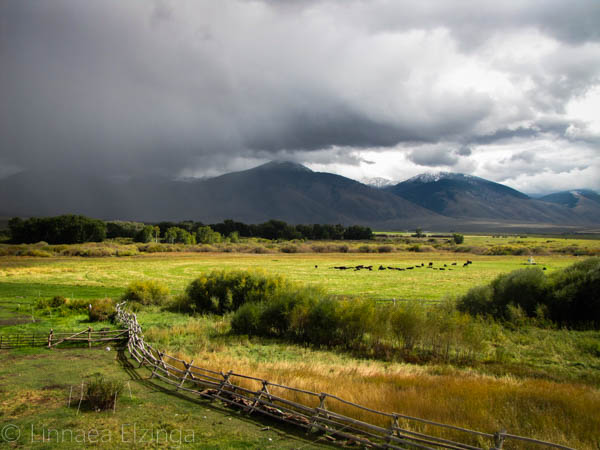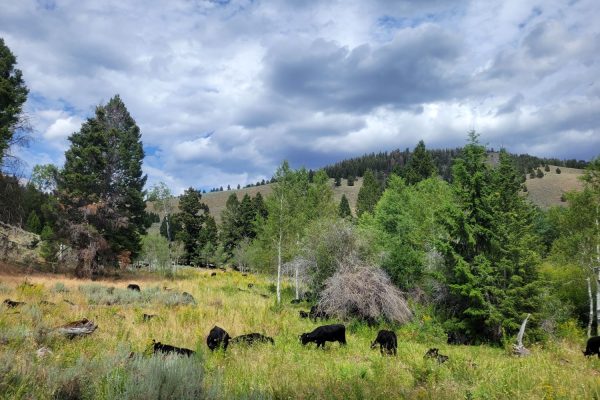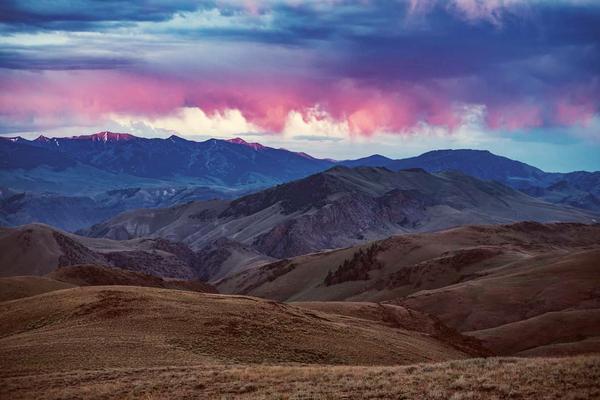
The air is thick with a prelude to autumn today. Rain fell on the ranch last night—all night, and blanketed the peaks with a foot of snow. Fragrances of sage and rich meadow grasses—the richest of the year– give the breeze a palpable quality that complements the sight of fall-shifting vegetation hues.
With the sight and smells come sounds: Canada geese and Sandhill cranes are ramping up training flights in preparation for upcoming migration. In the dusk of early evening, the ethereal mating call of bull elk wafts up from the river bottoms. Lute-like, the call crosses a long range of notes, starting from a deep bass that testifies to the size and breath capacity of a massive elk. It ends in a pennywhistle high soprano at the top of the scale. Why humans have termed it a bugle I will never know; perhaps it is because of how it penetrates and carries over a mile of evening stillness through forest and glade.
“‹
Foreign birds are showing up around the ranch on their way south. I’m already casting an eye and ear skyward for snow geese commuting from the barren lands of the arctic north on their way south to coastal California. These are true snowbirds, and the kids and I have often been in awe of their fine diamond necklace resemblance as they float far above us in formation at 20,000 feet, lit by a sun that long has set on us mere ground dwellers. We wouldn’t even notice them except for the bell tinkling sounds that their honking makes over the great distance between us.
Today, more avian migrants clustered in our great crack willow trees near the house in apparent refuge from the weather front that descended on us last night. A yellowthroat warbler smacked into one of our view affording front windows, and lay on the stoop, stunned. Ten year old Madelyn pulled me from my lunch to save it. Save it I did, as Ralphie the housecat would have inevitably found it.
I gently cupped my hands around the palm-sized bird while Madelyn coached me. The tiny hen felt light as a breath as she initially struggled and chirped for freedom, but in a second, she seemed to rest in the comfort of my grip, and quieted. I gently put her on a fencepost out of reach of Ralphie, and watched as she wobbled in her brain fog. In a few minutes of recovery time, she was off flitting away with her migrant mates.
Migratory birds aren’t the only travelers showing up on the ranch. Chinook, or king salmon are excavating redds (spawning beds) in gravels in the free flowing Pahsimeroi as I write this, just a few hundred yards from our home. It’s amazing they have enough energy after a journey over 7 dams and 900 miles up the Columbia River from the Pacific. It is one of the longest and most arduous salmon return journeys in the world, both in length and elevation gained. The condition of their flesh tells the tale: most arrive with fins torn or missing, and battle scars over the length of their bodies.
They have climbed over a mile in elevation, and by scent, and that alone, find the exact spot in the living and pristine waters where they themselves emerged as tiny fry from the oxygen-rich Pahsimeroi River gravels. The change in size is remarkable: from a peppercorn sized salmon egg, some of these fish are in excess of 40 inches in length when they return to the ranch after 2 years in salt water. Their days are numbered upon arrival as they are dying, even as they diligently prepare nurseries for their young.
It is in this context of wildness that we raise our protein. I’ve wandered this country far and wide over my 53 years, and unfortunately, most agricultural operations I have worked on or driven through invade these natural systems and alter them. More often than not, the alteration is permanent, resulting in complete replacement of the natural flow of native ecosystems with production agriculture.
We’ve learned more and more over the years that the better we can work with and mimic the rhythms and cycles of functional biodiverse ecosystem, the easier our job of raising healthy animals and great tasting beef becomes. An the ancillary benefits of watching wild salmon come up and spawn on our river and the Sandhill crane teenagers on their practice flights”¦well, that’s pretty hard to put a dollar value on. But for Caryl and I personally, it an important part of why we do what we do.
Thank-you for being a part of it.







Leave a Reply